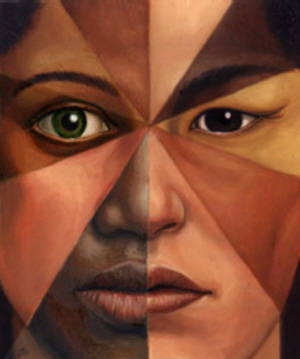Race is a socially constructed grouping of people not based on biological factors, but on the understanding that there are societal differences in the treatment of different races. It is the recognition that there are social inequalities between the races that keep one group superior and another inferior. Race consciousness is a state of being aware of one’s race in their surroundings and how others perceive it in society.
The 18th and 19th centuries show that racial consciousness among black people was observing that they were viewed as human chattel to white people, as a result, deserved to be treated as such by whites. They were prohibited from accessing many standards of human rights: such as reading and writing, free movement, and unequal treatment. Even after slavery was abolished, consistently black people were still seen as less than white people who still needed to be controlled and regulated. Consequently, racial consciousness produces certain behaviors that are then exercised by the members of that race. One example is the idea of racial uplift. “DuBois expressed a mild form of race consciousness, arguing that the best-trained members of the race (best families) have a responsibility to uplift the masses.” This strategy will be talked about later, but it is the idea of once a black individual has become successful in their field, they have a moral responsibility to do the same for the other members of the race. While successfully disproving a lot of white claims about their capability and their intelligence.
Race consciousness for black women is felt and expressed a little differently. For black women, it was the understanding that they did not fit into either category of women or black. They were excluded from this notion of a lady because they are black and excluded from the idea of blackness because they were women. So, feminist movements and black movements did not include black women in their fights for equality. However, future black female authors, later see their intersectionality as advantageous, not just for black women but for all of American humanity.
You (as the viewer) are going to move through time and witness how black women have grappled with this idea of race consciousness and made sense of their exclusion from ladyship and blackness.
We first start with the notion of Being Denied. Before the American Revolution (1776), black people were denied the status of a human or a person, so black female activists focused mostly on black issues and proving that black people were deserving of everything they were refused as slaves. Also, a lady at this time stemmed from European high society. A Lady was a title given to women of high status, and the only people considered high status were white people.
Then we move to the notion of Reclaiming, during Reconstruction. Black people were working hard to show that they are, in fact, Americans, and should have access to all the ideologies written in the constitution. In fact, they show how powerful and essential they are to American society. We also begin to see this separation of blackness and womanhood during this time as well.
Finally, we see a Celebration of marginalized identities. Actions that black women have historically performed are acknowledged and celebrated.
All five authors you will encounter have one or all three notions expressed in their lives and their literature, but we situated them in which notion they historically fell in.
Pitts, James P. “The study of race consciousness: Comments on new directions.” American Journal of Sociology 80.3 (1974): 665-687.
Namgayzam. “Race in American Media.” ASU, 17 Sept. 2015, http://cronkitehhh.jmc.asu.edu/blog/2015/09/race-consciousness-for-the-complete-story/.
